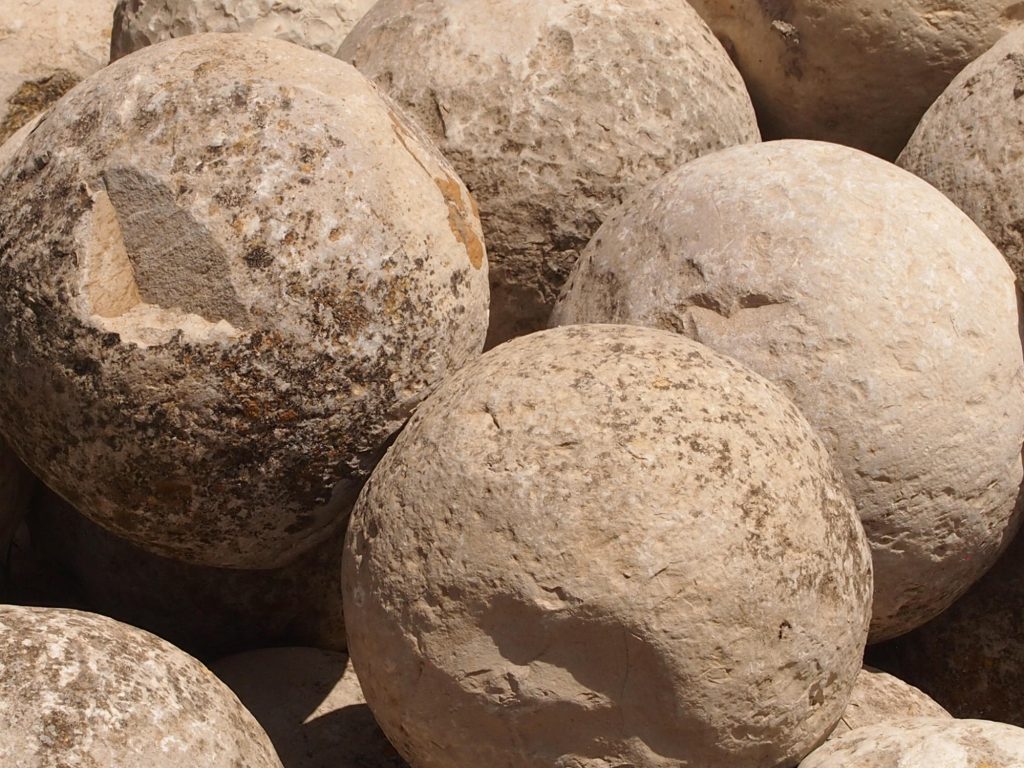
The age of the stones ranges from 4500 to 3600 years.
Stone balls are believed to date back to an ancient Greek board game.
According to archaeologists from University of Bristolthe mysterious stone balls discovered in many ancient settlements in the Aegean and Mediterranean seas could be pieces of the oldest board games ever created.
These balls have reportedly been discovered at sites in Santorini, Crete, Cyprus and other Greek islands. There have been many theories about their potential uses, including for throwing stones, throwing balls, counting/record-keeping systems, or as counters/pawns.
The same team from[{” attribute=””>University of Bristol previously conducted research that indicated there was size variation among certain clusters and collections of spheres. The researchers then intended to investigate any possible patterns within these sphere concentrations to help shed light on their potential use.
Dr. Christianne Fernée and Dr. Konstantinos Trimmis of the University of Bristol’s Department of Anthropology and Archaeology recently published a study that examined common characteristics on 700 stones that were discovered at the Bronze Age town of Akrotiri on the island of Santorini. The stones’ ages ranged from roughly 4,500 to 3,600 years old.

The kernos (slab with cup marks) at the square of the House of the Benches and an interpretation of how the spheres could be associated. Credit: Konstantinos Trimmis
The stones, which are smaller than golf balls, are in various colours and made from different materials. The analysis put the stones into two groups of larger stones and smaller. In addition, in Akrotiri and in other settlements across the Aegean there are stone slabs with shallow cup marks where the spheres could have sat or been placed.
Dr Ferneé said: “The most important finding of the study is that the speres fit two major clusters (one of smaller and one of larger stones). This supports the hypothesis that they were used as counters for a board game with the spheres most possibly have been collected to fit these clusters rather than a counting system for which you would expect more groupings.”

Stone slabs with cup marks (kernos) and their Reflectance Transformation Imaging analysis. Credit: Konstantinos Trimmis
If these spheres are in-fact part of a boardgame, they will be one of the earliest examples, along with similar examples from the Levant and Egypt, such as the Egyptian Mehen and Senet.
Dr Trimmis added: “The social importance of the spheres, as indicated by the way they were deposited in specific cavities, further supports the idea of the spheres being part of a game that was played for social interaction. This gives a new insight into the social interaction in the Bronze Age Aegean.”
The next stage of the research is to apply a similar methodology to the slabs to see if there is clustering in the cup marks and trying to associate the spheres and slabs together. The team also hope to use artificial intelligence techniques to determine how the game was actually played.
Reference: “The rolling stones of Bronze Age Aegean: Applying machine learning to explore the use of lithic spheres from Akrotiri, Thera” by Christianne L. Fernée, and Konstantinos P. Trimmis, 9 September 2022, Journal of Archaeological Science: Reports.
DOI: 10.1016/j.jasrep.2022.103615




/cdn.vox-cdn.com/uploads/chorus_asset/file/25550621/voultar_snes2.jpg)



More Stories
Watch a Massive X-Class Solar Explosion From a Sunspot Facing Earth (Video)
New Study Challenges Mantle Oxidation Theory
The theory says that complex life on Earth may be much older than previously thought.